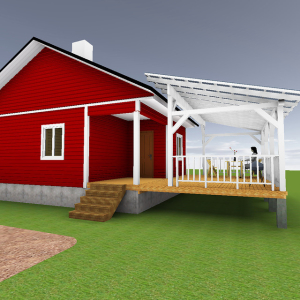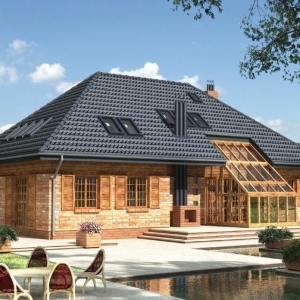At home, it is customary to equip with drain systems in order to protect walls, windows and foundations from the destructive effects of water converging with their roofs. The design of the drainage is selected depending on the budget, the appearance of the building, as well as the cornice and roof devices.
For the manufacture of water removal systems, different materials are used, products of which have their advantages and minuses:- Steel with galvanized coating - inexpensive solution, but parts are subject to corrosion and joints often proceed;
- Metal coated with a layer of polymer - cost more expensive, have a large selection of colors, the density of the compounds is provided by rubber gaskets;
- Plastic drainage - do not rust, keep the initial appearance until the end of the service life, but in winter they become fragile;
- Copper systems are more expensive than everyone, require competent installation, but durable and beautiful.
- Gutter - their metrar is calculated along the length of the roof rod;
- Funnels - located 10 meters and in places of turns, bends;
- Pipes - connected to funnels and fall along the wall to the ground;
- Pins with clamps - depending on the height of the building from 3 to 5 pieces per pipe;
- Staples or hooks - on 1 m steel gutter one fasteners and two - for plastic;
- Corners, tees, knee, plugs and turns - quantity depends on the complexity of the facade of the house;
- Plums are installed at the ends of the pipes.
For small roofs, pipes 50-75 mm and a gutter 70-115 mm with a diameter, drainage on the houses of a large area are made of gutters with a cross section of 130-200 mm and pipes up to 170 mm.
The installation of drains begins with determining the location of the fasteners and markup of their folds so that the slope of the gutter towards the funnel was 5-10 mm per meter. Further, two extreme bracket are fixed, the beeps are stretched, which is mounted for the remaining staples. On Earth, the chute is gaining the desired length, is unnecessary cut off with a metal with a metal. Details rise separately and are connected after placement on the brackets.If desired and small volumes, the drains can be made independently using bending devices or apply sewage pipes, as the author of the video roller did.



































